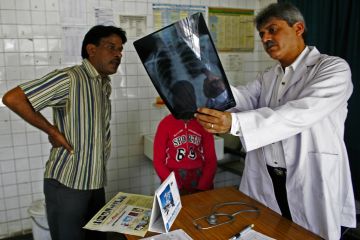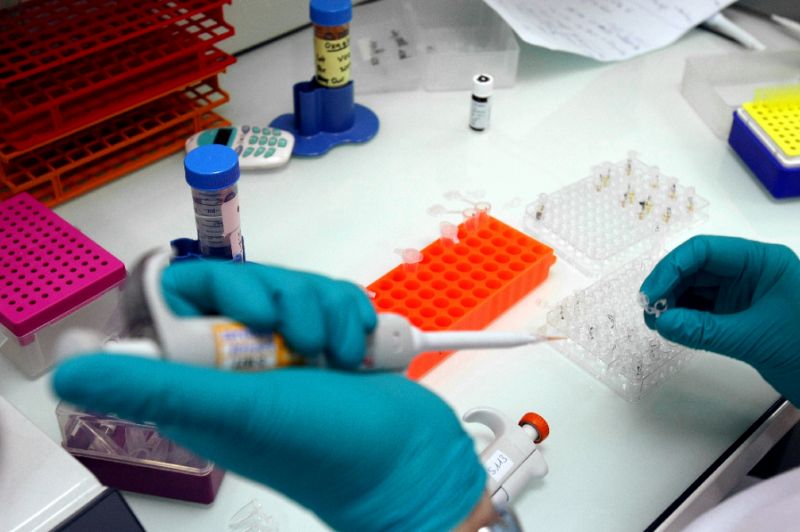New Delhi|HL
Around 5 lakh Indians are infected by slow poison and fierce killer called tuberculosis bacterium and making them fall prey to TB.
In this war against TB, all hope is not lost now researchers from the Indian Institute of Science, Bengaluru have managed to break into TB bacterium’s highly secure intelligence gathering mechanism which senses the drugs being used to attack this slow growing organism.
To take care of more than half a billion people who could fall prey to TB, the government has allocated Rs 1,640 crore, a mere drop in the ocean to contain this deadly terrorist.
The hope being if one understands how the TB bacterium becomes drug resistant discovering drugs that can kill it may be that much easier.
To strike at the root of any terrorist organisation getting reliable insider information is key to busting it and then eliminating it. Similar is the case with the dodgy TB bacteria that just stealthily hides away in our bodies and strikes when it sees an opportunity.
Now, Deepak Kumar Saini, an Assistant Professor at the Department of Molecular Reproduction, Development and Genetics, Indian Institute of Science, Bengaluru, is deciphering the signalling mechanism within the TB bacterium which gives it this invincibility.
How does the TB bacterium figure out that a new drug is being used to kill it and how this organism that has existed at least since Biblical times manages to become drug resistant.
The TB bacterium is cunning and is able to survive according to the researchers due to its ability to sense and adapt to its host’s environment. Saini’s laboratory is working at unravelling the molecular mechanism that helps the tuberculosis bacterium sense, respond and adapt to its host environment.
In a recent research paper, Saini says starting with the basics, for any sensory system to function, there has to be a minimum of two components with one receiving the signals and then subsequently transferring the signal to another component.
Two-component signalling, as the name suggests has two protein components involved in the signalling.
The first is a ‘receptor’ molecule called the Sensor Kinase (SK), which is present on the outer membrane surrounding cells and is responsible for ‘receiving’ diverse environmental stimuli.
The second component is the ‘effector’ molecule called the Response Regulator (RR), which when activated by the Sensor Kinase (SK) produces an ‘effect’, by binding to specific regions of the bacterial DNA and activating the decoding of genes involved, in the response to that stimulus.
“One can, therefore, appreciate the extreme importance of these systems for the pathogen”, explains Saini.
“Without these systems, the pathogen will not be able to adapt and survive inside the hostile and constantly changing host environment. Understanding signalling systems like the two component system may be the key to combating this pathogen more effectively,” he adds.
The TB bacterium has also been evolving as humans fight it, in the first instance four frontline drugs are deployed to treat TB, occasionally since the treatment of TB is a prolonged one lasting several months, patients often abandon the intake of antibiotics halfway.
This gives the organism an opportunity to develop resistance and becomes multi-drug resistant, some 79,000 people have been detected with MDR-TB reports the health ministry. In rare cases it becomes even more virulent and is classed as extremely drug resistant TB and about 2700 such cases have been reported.
Further off late some totally drug resistant strains of the TB bacterium have also been detected.
Union Minister of Health and Family Welfare J P Nadda said, “The government of India stands committed to accelerating its efforts to combat tuberculosis in the country.”
Recently the health ministry launched Bedaquiline – new anti-TB drug for treating drug resistant TB. The drug is a new anti-TB drug for treatment of MDR-TB. This new class of drug specifically targets Mycobacterial ATP synthase, an enzyme essential for supply of energy to Mycobacterium tuberculosis and most other mycobacteria.
This drug is indicated for use in the treatment of drug-resistant TB.
Incidentally one of the co-discoverers of the drug is Dr Anil Koul, a Kashmiri Pandit who fled the valley at the height of the insurgency and now works in Belgium.
Terrorists made Koul migrate out of J&K but then he chased his dream of trying to find a cure for this tiny bacterial terrorist.
All efforts are needed to thwart this microscopic terrorist that threatens India, this novel approach at understanding the signalling pathways of the TB bacterium offers an ‘exciting new way to try and contain the TB epidemic’ says Saini.
Inputs:ET healthworld










